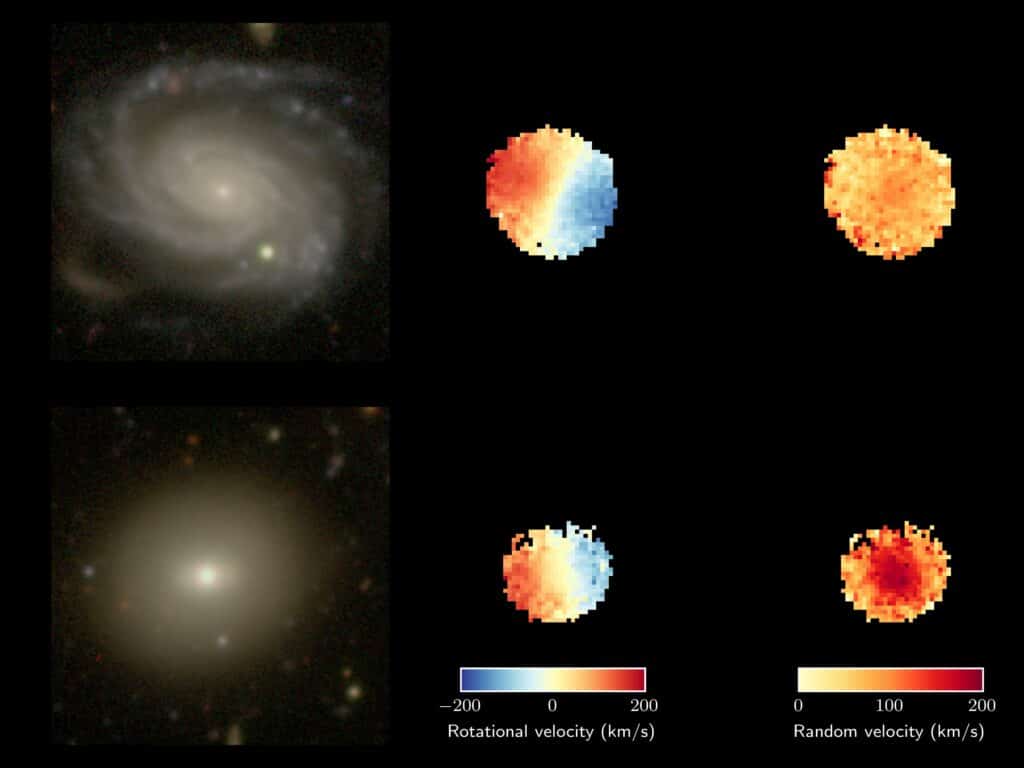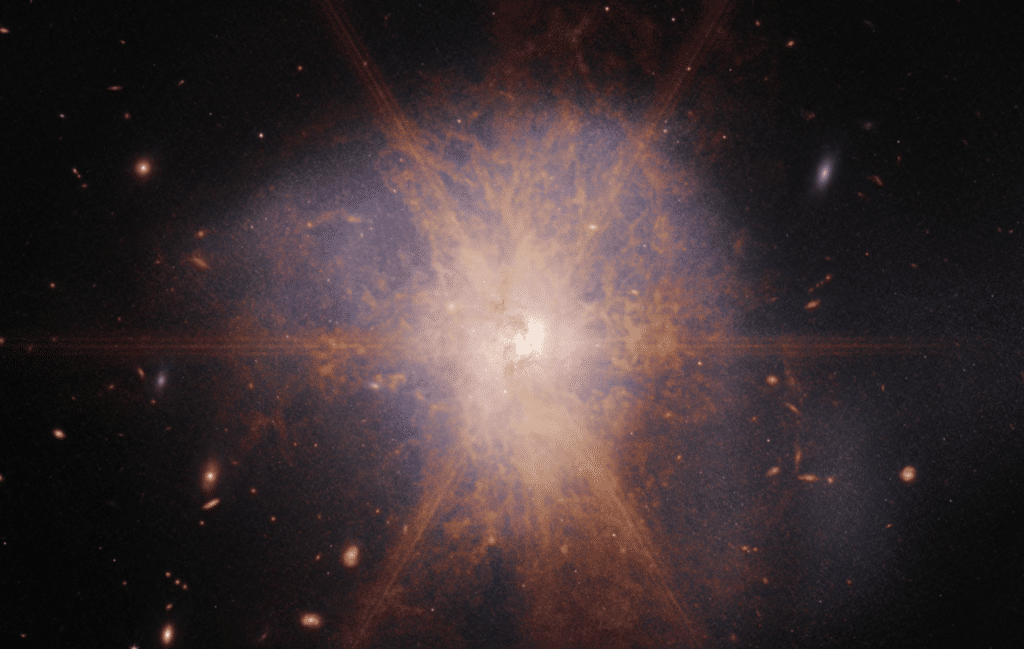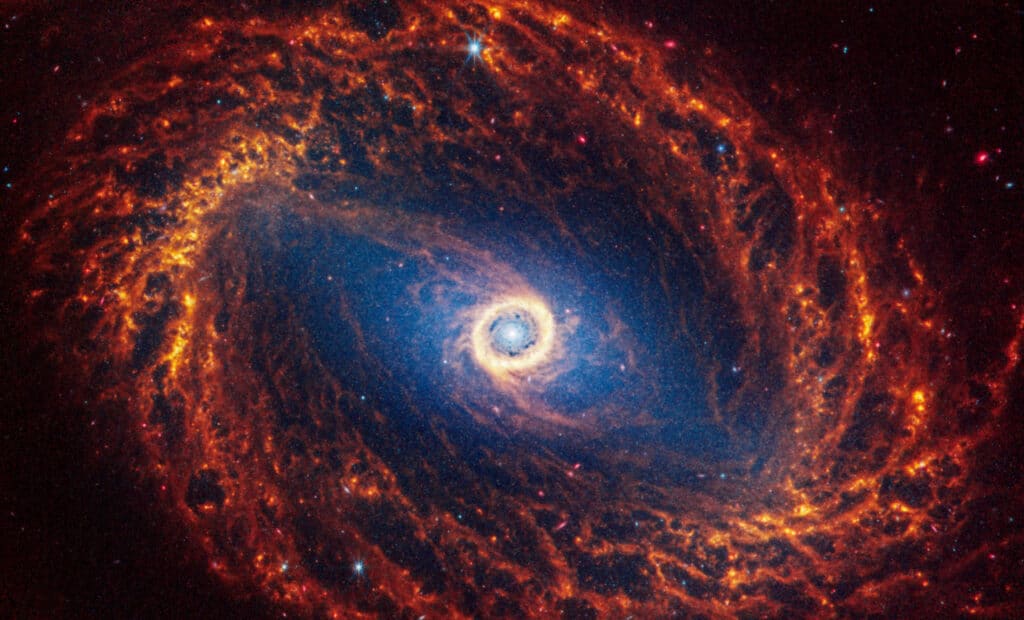As galaxies twirl through the cosmos, what sets the tempo of their dance? A new study using data from the SAMI Galaxy Survey and published in the journal Monthly Notices of the Royal Astronomical Society finds the answer may lie more in the ages of the stars than the galaxy’s heft or its cosmic neighborhood.
Galaxies don’t all spin at the same rate. Some pirouette gracefully, while others appear to have two left feet. Astronomers quantify a galaxy’s spin using a parameter called λRe. A higher λRe means the galaxy is a better dancer, rotating more rapidly.
Researchers from the Arc Center of Excellence for All Sky Astrophysics in 3D (ASTRO 3D) have known for some time that λRe is related to a galaxy’s mass, with heftier galaxies tending to be more sluggish dancers. There’s also been evidence that the local environment — how many other galaxies are nearby — plays a role in setting the spin.

But in this new work, scientists found that the age of the stars in the galaxy is actually the strongest predictor of its twirling abilities. Galaxies with older stellar populations tend to have lower λRe, meaning they rotate more slowly.
“When we did the analysis, we found that age, consistently, whichever way we slice or dice it, is always the most important parameter,” says first study author Scott Croom, an ASTRO 3D researcher and professor at the University of Sydney, in a media release.
“Once you account for age, there is essentially no environmental trend, and it’s similar for mass.”
Here’s how the team figured this out. They looked at spin measurements for over 3,000 galaxies from the SAMI survey. For each galaxy, they also had an estimate of its total mass in stars, a measurement of its local environment (based on how many other galaxies were nearby), and an estimate of the average age of its stars.
ASTRO 3D researchers used a statistical technique called partial correlation to tease apart which of these factors — mass, environment, or age — was most strongly linked to the galaxy’s spin. Partial correlation allows scientists to look at the relationship between two variables (like spin and age) while controlling for the effect of other variables (like mass and environment).
Regardless of the exact method used to estimate stellar age, it consistently emerged as the strongest correlate of spin. In other words, if you know the age of a galaxy’s stars, you can make a pretty good guess about how fast it’s spinning, regardless of how massive it is or what its local environment looks like.
This finding suggests that the key to a galaxy’s twirling lies in its history of star formation. Galaxies with older stars likely formed the bulk of their stars earlier in the universe’s history, when the cosmos was a more turbulent place. This early chaos may have set these galaxies spinning more slowly from the start.
In contrast, galaxies with younger stellar populations likely had more orderly star formation that occurred later, building up a more coherent, rapidly rotating disk of stars.
Scientists did find one exception to this general trend. For the most massive galaxies in the densest environments, there was an additional environmental effect. Central galaxies in clusters tended to rotate more slowly than satellite galaxies of similar mass and age.
“One of the challenges of getting simulations right is the high resolution you need in to predict what’s going on. Typical current simulations are based on particles which have the mass of maybe 100,000 stars and you can’t resolve small-scale structures in galaxy disks,” explains Croom.
Researchers think this could be due to these central behemoths experiencing more galaxy mergers over their lifetimes. Galaxy mergers are known to disrupt orderly rotation and slow down spin. And central galaxies, sitting at the heart of busy clusters, are more likely to experience such smashups.

But for the majority of galaxies, it’s the age of the stars, not the environment, that seems to set the beat for their cosmic dance. This suggests that a galaxy’s rotation is largely determined in the early stages of its life, with subsequent effects from its surroundings playing a secondary role.
Researchers note that their findings align with trends seen in galaxy simulations. For example, the EAGLE simulations predict that the relationship between spin and stellar age should remain steady for younger galaxies out to about 10 billion years lookback time.
These are the first steps in unraveling the complex choreography of galaxy rotation. Future studies will aim to measure spin in more distant, earlier galaxies to test the predictions from simulations and further illuminate the factors that set galaxies twirling through cosmic time. With each new observation, we come a little closer to understanding the intricate dance of the cosmos.












